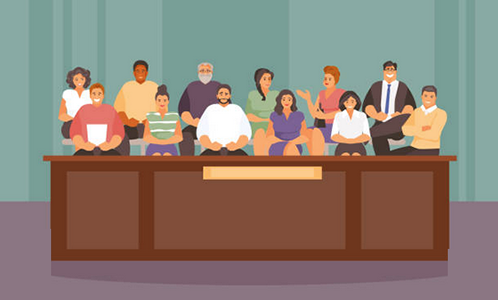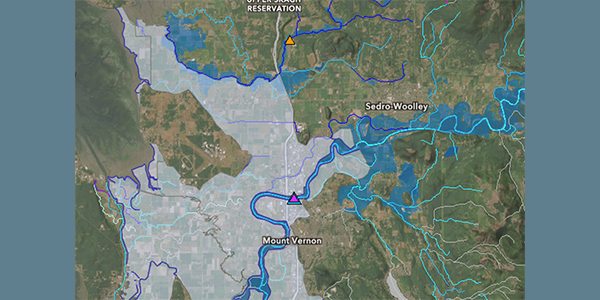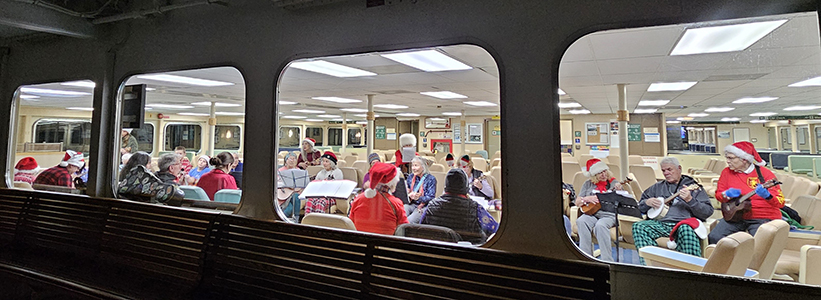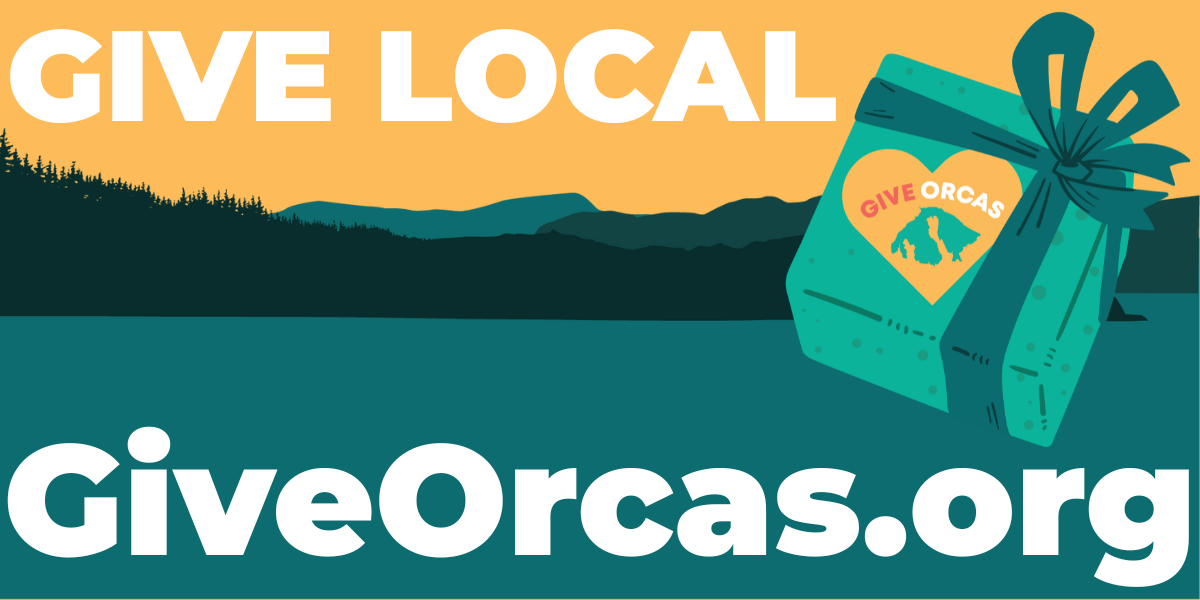Salmon Recovery Projects Awarded More Than $44 Million in Grants Statewide
— from Susan Zemek, State Recreation and Conservation Office —
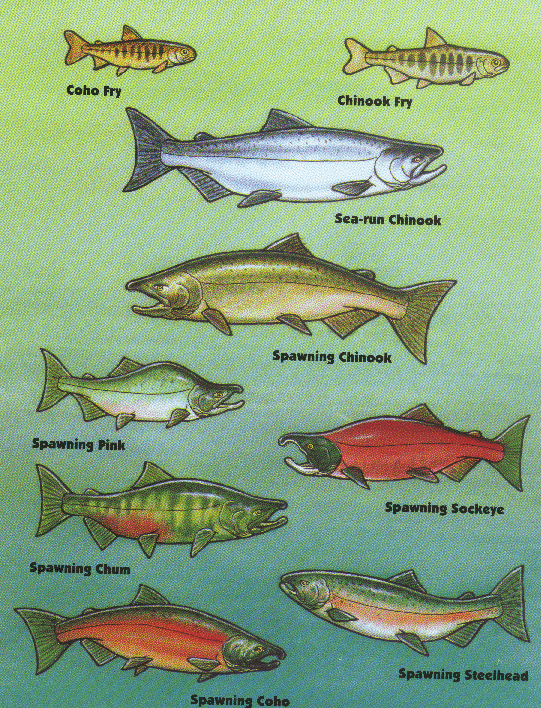 The Washington Salmon Recovery Funding Board and the Puget Sound Partnership [on December 9] announced the award of $44.3 million in grants to organizations around the state for projects that will restore salmon habitat and conserve pristine areas, all targeted at bringing salmon back from the brink of extinction.
The Washington Salmon Recovery Funding Board and the Puget Sound Partnership [on December 9] announced the award of $44.3 million in grants to organizations around the state for projects that will restore salmon habitat and conserve pristine areas, all targeted at bringing salmon back from the brink of extinction.
“Salmon recovery is an important priority in Washington,” said Gov. Jay Inslee. “These efforts help ensure that our grandchildren will be able to see this iconic species return home every year. We are preserving salmon for the families and businesses that rely on them for their livelihoods, their recreational pursuits and their culture or sustenance. We also are helping our communities restore lands that will yield other important values like resilience to flooding or habitat for a variety of other species. It’s a smart investment any way you look at it.”
The Salmon Recovery Funding Board awarded grants to organizations in 28 counties for 141 projects. The grants will be used to remove barriers that prevent salmon from migrating, increase the types and amount of habitat for salmon, conserve pristine areas and replant riverbanks so there are more places for salmon to spawn, feed, rest, hide from predators and transition from freshwater to saltwater and back again.
Grants Awarded in San Juan County: $952,319
Friends of the San Juans Grant Awarded: $91,260
Designing the Restoration of Sucia Island’s Salt Marsh
The Friends of the San Juans will use this grant to complete preliminary designs for a project to remove a road, fill, culvert, and revetment along Mud Bay’s beach on Sucia Island. Removal of the road and culvert will allow seawater to cover the entire marsh and uncover about 8,000 square feet of beach and salt marsh habitat.
The 2.2-acre marsh and beach were altered when a road was built along the shore. There is a single, 18-inch corrugated plastic pipe that allows only a partial exchange between the salt marsh and Mud Bay. The pipe prevents young fish from traveling through and using the salt marsh. Salt marshes are important to salmon because they provide a place for salmon to transition between freshwater and the ocean. The road, its armor, and fill buries marsh and upper beach habitat.
During this phase of the project, Friends of the San Juans and the Washington State Parks and Recreation Commission will work with technical experts to complete a preliminary design for the salt marsh and associated pocket beach and for a feasible, cost-effective alternative to support park operations impacted by road removal. This grant is from the Puget Sound Acquisition and Restoration fund and the salmon recovery grant program. For more information and photographs of this project, visit RCO’s online Project Search. (15-1288)
Friends of the San Juans Grant Awarded: $172,176
Uncovering Fish Spawning Habitat
The Friends of the San Juans will use this grant to remove large rocks that have buried spawning habitat of surf smelt, a fish salmon eat, in San Juan County at Blind Bay on Shaw Island and at West Sound on Orcas Island. Over decades, waves have moved angular rocks placed to protect roadways onto beaches used by smelt to spawn. The Friends of the San Juans will use both machines and volunteers to remove the unwanted rocks. Hand removal will be completed using Washington Conservation Corps crews and community volunteers, providing an excellent opportunity for engagement and education while minimizing construction impacts to sensitive areas. The Friends of the San Juans will contribute $30,384 from another grant and donations of labor. This grant is from the salmon recovery grant program. For more information and photographs of this project, visit RCO’s online Project Search. (15-1289)
Long Live the Kings Grant Awarded: $196,383
Studying Chinook Salmon in the San Juan Islands
Long Live the Kings will use this grant to assess the role of Chinook Salmon residency in the San Juans relative to salmon recovery. The group will determine the natural populations represented, the relationship between residency and overall ocean survival, what influences residency, and the relative importance of the San Juan Islands to sustaining this unique life-history trait that provides diversity and resilience to Puget Sound Chinook. The San Juan Islands have the highest catch-rate of resident Chinook Salmon anywhere in Puget Sound. Results will help determine the priority of protecting the resident form, and what steps, including habitat restoration and protection, harvest changes, and hatchery management modifications, can be taken to do so. This collaborative effort is a component of the Salish Sea Marine Survival Project. Puget Sound Chinook Salmon are listed as threatened with extinction under the federal Endangered Species Act. Long Live the Kings will contribute $60,000 from another grant. This grant is from the Puget Sound Acquisition and Restoration fund and the salmon recovery grant program. For more information and photographs of this project, visit RCO’s online Project Search. (15-1239)
San Juan County Land Bank Grant Awarded: $492,500
Conserving Cascade Creek Shoreline
The San Juan County Land Bank will use this grant to buy nearly 24 acres of forest and shoreline along Cascade Creek, on Orcas Island. Cascade Creek has valuable freshwater salmon habitat and documented historical use by Chinook Salmon, which are listed as threatened with extinction under the federal Endangered Species Act, and Coho Salmon and Cutthroat Trout. Included in the acquisition request will be nearly a quarter-mile of creek shoreline, including all 300 feet of the currently available salmon habitat. The San Juan County Land Bank will contribute $88,500 in voter-approved bonds and donations of labor. This grant is from the Puget Sound Acquisition and Restoration fund. For more information and photographs of this project, visit RCO’s online Project Search. (15-1300)
Funding for the grants comes from the sale of state bonds and the federal Pacific Coastal Salmon Recovery Fund, administered by the National Oceanic and Atmospheric Administration’s National Marine Fisheries Service. Nearly $25 million comes from the Puget Sound Acquisition and Restoration fund, which is dedicated to the most effective projects in the Puget Sound region.
“What’s good for salmon is good for people, too. As the largest estuary in the nation, Puget Sound is the nursery for much of the Northwest’s salmon populations. It’s also home to more than two-thirds of our state’s population,” said Sheida R. Sahandy, executive director of the Puget Sound Partnership. “These funds advance regionally significant projects that protect treaty rights, provide clean water and healthy food and ensure a future for the natural resources that feed our souls and fuel our economy.”
What is the Problem?
Salmon populations in Washington had been declining for generations. As Washington grew and built its cities and towns, it destroyed many of the places salmon need to live. In 1991, the federal government declared the first salmon as endangered. By the end of that decade, salmon populations had dwindled so much that salmon and bull trout were listed as threatened or endangered in three-quarters of the state. Those listings set off a series of activities including the formation of the Salmon Recovery Funding Board to oversee the investment of state and federal funds for salmon recovery.
“Without these projects, we would lose salmon entirely,” said David Troutt, chair of the Salmon Recovery Funding Board. “These grants are restoring the places where salmon live and we have seen these projects stop salmon populations from declining. Salmon are experiencing the impacts of climate change right now, from droughts to warming oceans. The problems seem very large and daunting, but the work we do in our watersheds to ensure the surviving salmon have a home when they return from their incredible journey is making a difference. It’s a challenge and not one we are winning everywhere. There is a lot of work left to do all around the state and we must continue these important investments if we are to return salmon to healthy and sustainable numbers. This is important work, worth doing.”
How Projects are Chosen
Projects are selected by lead entities, which are watershed-based consortiums that include tribes, local governments, nonprofits and citizens. Lead entities recruit projects and sponsors, make sure the projects are based on regional salmon recovery plans approved by the federal government and prioritize which projects to submit to the Salmon Recovery Funding Board for funding. Then, regional salmon recovery organizations and the Salmon Recovery Funding Board review each project to ensure they will help recover salmon in the most cost-effective manner.
“We think this process – involving individuals from state, local, nonprofit, tribal and federal entities – ensures that only the best projects are funded,” said Kaleen Cottingham, director of the Washington State Recreation and Conservation Office, which administers the grants. “This is a bottom-up approach. Local groups identify what needs to be fixed for salmon in their communities and then those projects are subject to technical and scientific review at a regional and state level, ensuring we invest the money very wisely.”
Salmon Recovery Means Jobs
Recent studies showed that every $1 million spent on watershed restoration results in an average of 16.7 jobs and up to $2.6 million in total economic activity and that 80 percent of grant money is spent in the county where the project was located.
These new grants are estimated to provide more than 460 jobs during the next 4 years and about $73 million in economic activity as grant recipients hire contractors, crews and consultants to design and build projects, including field crews to restore rivers and shoreline areas.
Information about the Salmon Recovery Funding Board and the Recreation and Conservation Office is available online at www.rco.wa.gov.
**If you are reading theOrcasonian for free, thank your fellow islanders. If you would like to support theOrcasonian CLICK HERE to set your modestly-priced, voluntary subscription. Otherwise, no worries; we’re happy to share with you.**



